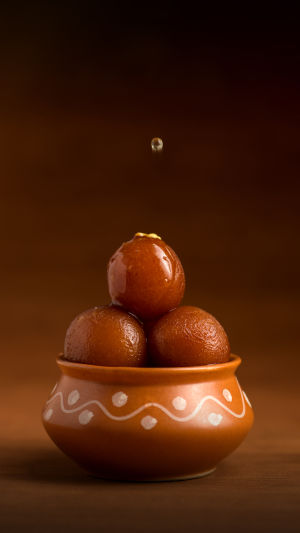When it comes to Indian food, the first thing that comes to our mind is probably curry. However, another food is also indispensable in the life of Indian people, and that is Indian desserts.
If you walk into an Indian dessert store, you will be dazzled by the wide variety of desserts in the display case. Indian desserts are usually made from milk, ghee, flour and a lot of sugar.
However, since India is a country with a large geographical span, the desserts of different regions have their own characteristics, but they all have one thing in common, that is, very, very sweet, as if sugar is free.
Just as Indian-inspired dishes are known and loved for their use of spices, so to are Indian desserts, which often have an earthy flavor, such as cardamom or nutmeg.
The desserts here are also very tasty, from complex, multi-layered beings to brightly colored laddoos.
An added bonus is that Indian desserts are not just an after-lunch or after-dinner treat: many Indian sweets are served for breakfast, or as a quick snack when traveling.
Indian life and dessert are inseparable, and some Indians say that no wedding or festival is complete without dessert.
Whether it's celebrating a big festival, inviting guests to your home, or successfully passing an important exam, dessert is a must.
Bebinka. This dish originated when Portuguese colonists came to Goa in the 16th century and brought with them their creamy desserts.
It is a thick and dense cake eaten at traditional festivals in Goa, India. The bebinca consists mainly of a batter made of eggs, flour, nutmeg, and coconut milk, which is baked into a thin layer and then a layer of butter is placed in the middle.
This dish is time-consuming to make and more time-consuming it is as the number of layers increases. The minimum is 7 layers and the maximum can reach 16 layers. In any form, the colorful stripes of the bebinca are showing the baker's skill and pleasure to the consumer.
Kheer or Payasam. it is made with rice and milk and sprinkled with cashews, raisins, pistachios, almonds, saffron, and cardamom. Some places use sugar as a sweetener, while others use coconut sugar instead. They are sweet and soft to eat, and chewy, making them a good snack.
Rosehips. Rosehip is a very traditional Indian dessert that originates from North India and is popular in Nepal, Pakistan, Bangladesh, and even the Middle East. In Hindi, "Gulab" means rose and "Jamun" means fruit, and Gulab Jumum is a very common dessert at Indian festivals and weddings.
The preparation of Gulab Jumum is not complicated: first, most of the water in the milk is evaporated over low heat to obtain "milk solid"; then, the "milk solid" is mixed with flour in proportion, rolled into small balls and deep-fried; finally, the fried fruits are allowed to cool. Finally, the fried fruits are cooled and soaked in a syrup made of rose water, beans, saffron, etc.





